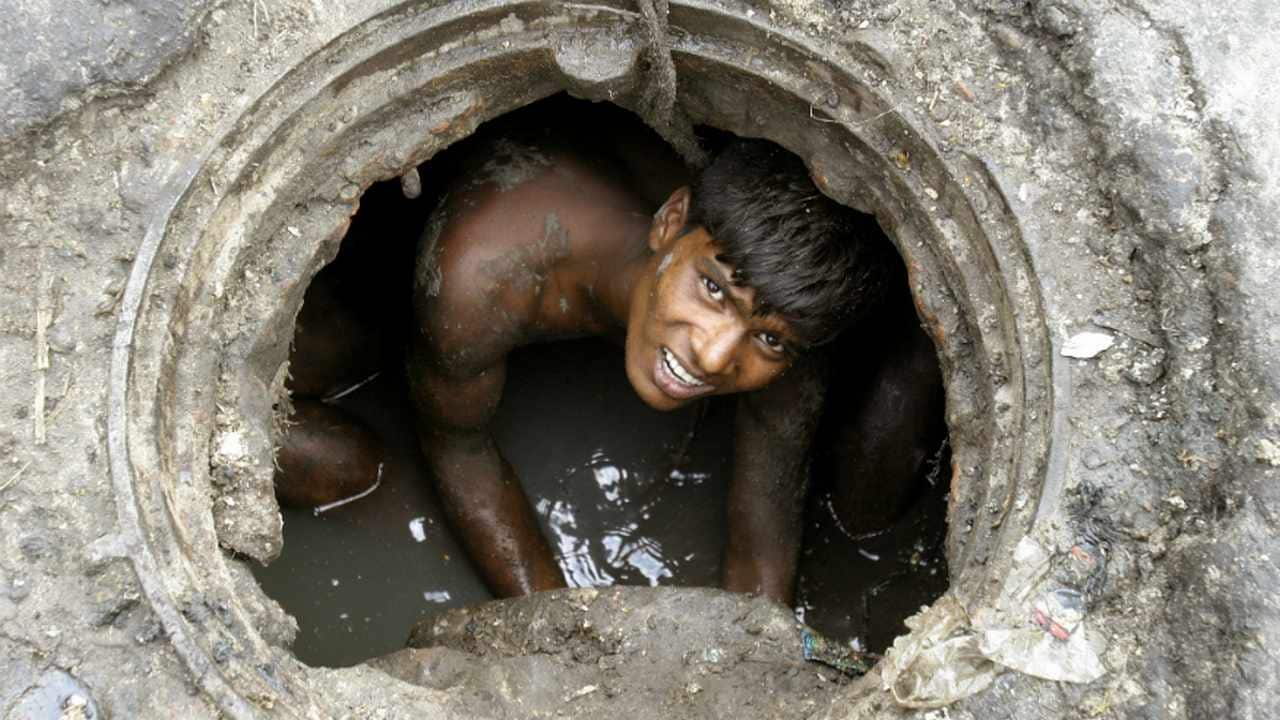Context
-
Three labourers in Mumbai, allegedly hired for manual scavenging, died after inhaling toxic fumes in a septic tank.
What is manual scavenging?
- Manual scavenging is the practice of removing human excreta by hand from sewers or septic tanks. India banned the practice under the Prohibition of Employment as Manual Scavengers and their Rehabilitation Act, 2013 (PEMSR).
- The Act bans the use of any individual for manually cleaning, carrying, disposing of or otherwise handling in any manner, human excreta till its disposal.

Credit: Firstpost - In 2013, the definition of manual scavengers was also broadened to include people employed to clean septic tanks, ditches, or railway tracks.
- The Act recognizes manual scavenging as a “dehumanizing practice,” and cites a need to “correct the historical injustice and indignity suffered by the manual scavengers.”
Why is manual scavenging still prevalent in India?
- The lack of enforcement of the Act and exploitation of unskilled labourers are the reasons why the practice is still prevalent in India. The Mumbai civic body charges anywhere between Rs 20,000 and Rs 30,000 to clean septic tanks. The unskilled labourers, meanwhile, are much cheaper to hire and contractors illegally employ them at a daily wage of Rs 300-500.
- 472 deaths due to manual scavenging had been recorded from 2016 to 2020.
Compensation
- After a two-year-long wait, widows of the three workers who died while cleaning a septic tank in May 2019 were set to get compensation from the state government’s social justice department issuing a Government Resolution (GR).
- As per the Prohibition of Employment of Manual Scavengers and their Rehabilitation (PEMSR) Act, 2013 and the Supreme Court’s decision in the Safai Karamchari Andolan v/s Union of India case, a compensation of Rs 10 lakh each was awarded by the High Court to the three women.
Steps taken by BMC
- Cesspool vehicles and CP lorries will be available in each of Mumbai’s 24 wards for the cleaning of septic tanks in public or private premises.
- The machines are available in each ward but people hardly know about them.
- 24 machines will enable cleaning sewers in compact pipes or narrow lanes with a diameter of 300 mm, seven quick response machines for cleaning up quickly in case of urgent calls like a choke up, three 600 mm high capacity main sewer cleaning machines and three others for sludge and silt dewatering that will be used for cleaning septic tanks.
Source: IE
Visit Abhiyan PEDIA (One of the Most Followed / Recommended) for UPSC Revisions: Click Here
IAS Abhiyan is now on Telegram: Click on the Below link to Join our Channels to stay Updated
IAS Abhiyan Official: Click Here to Join
For UPSC Mains Value Edition (Facts, Quotes, Best Practices, Case Studies): Click Here to Join
